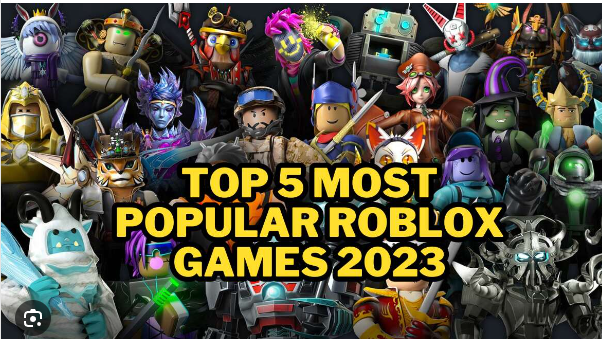Introduction (Approx. 250 words)
Horror video games have carved a significant niche in the gaming industry, captivating players with spine-chilling narratives, immersive atmospheres, and adrenaline-pumping gameplay. The evolution of these games parallels the evolution of technology, from the eerie ambiance of early titles like “Resident Evil” to the psychological terrors of “Silent Hill” and the pulse-pounding suspense of modern releases like “Dead by Daylight” and “Resident Evil Village.” In this article, we delve into the factors contributing to the enduring popularity of horror video games, exploring their appeal across demographics and cultures.
Historical Evolution of Horror Games (Approx. 500 words)
The roots of horror gaming trace back to the pixelated horrors of the 1980s with titles like “Alone in the Dark” and “Sweet Home.” These games laid the groundwork for the genre, introducing elements of suspense, fear, and survival. As technology advanced, so did the complexity and immersion of horror games. The 90s saw the rise of iconic franchises like “Resident Evil” and “Silent Hill,” where detailed environments, haunting soundtracks, and intricate narratives became defining features.
Psychological Appeal (Approx. 500 words)
What is it about horror games that draw players in? Explore the psychology behind the attraction to fear and how game mechanics, such as suspenseful pacing, jump scares, and atmospheric storytelling, trigger emotional responses. Discuss the adrenaline rush, the sense of accomplishment, and the thrill of facing fears in a controlled environment.
Cultural Impact and Influence (Approx. 500 words)
Examine how horror games reflect societal fears, cultural elements, and historical contexts. Highlight how these games have influenced other media forms, from movies to literature, and how they’ve shaped the gaming landscape, spawning fan communities, cosplay, and even academic discussions.
The Evolution of Gameplay Mechanics (Approx. 500 words)
Analyze the evolution of gameplay mechanics in horror games, from fixed camera angles and limited resources to more open-world experiences and multiplayer dynamics. Discuss how technological advancements have enhanced immersion, realism, and player agency in creating fear-inducing scenarios.
Conclusion (Approx. 250 words)
In conclusion, the enduring popularity of horror video games stems from their ability to evoke intense emotions, offer unique gameplay experiences, and evolve alongside technological advancements. Despite changing trends, the thrill of confronting fear within the safe confines of a game continues to captivate audiences worldwide.
Introduction (Approx. 250 words)
- Hook: Begin with an engaging hook or anecdote related to horror video games to capture readers’ attention.
- Definition: Define what constitutes a horror video game and its key elements.
- Transition: Transition into discussing the growing popularity of these games in recent years.
- Thesis Statement: Present your thesis, highlighting the reasons behind the increasing popularity of horror video games.
Historical Perspective (Approx. 400 words)
- Early Beginnings: Discuss the origins of horror video games, starting from classics like “Resident Evil” or “Silent Hill.”
- Evolution: Highlight how these games have evolved in terms of graphics, storytelling, gameplay mechanics, and audience reception.
- Impact of Technology: Explain how advancements in technology have contributed to making horror games more immersive and realistic.
Psychological Appeal (Approx. 500 words)
- Fear and Thrill: Explore the psychological aspect of horror games and why people enjoy the adrenaline rush they provide.
- Immersion and Engagement: Discuss how these games create an immersive experience, drawing players in through atmosphere, sound design, and narrative.
- The Role of Fear: Explain the role fear plays in these games, how it keeps players engaged, and why overcoming fear can be rewarding.
Cultural Influence (Approx. 450 words)
- Pop Culture Impact: Describe the impact of horror games on popular culture, including movies, TV shows, and other forms of media.
- Community and Streaming: Discuss the rise of horror game communities and how platforms like Twitch and YouTube have contributed to their popularity through streaming.
- Fanbase and Fandoms: Explore the dedicated fanbase and their involvement in discussions, fan theories, and creations inspired by these games.
Market Trends and Industry Impact (Approx. 400 words)
- Market Growth: Analyze the growth of the horror game market, citing statistics, sales figures, and trends.
- Indie vs. AAA: Compare the success of indie horror games versus big-budget AAA titles and how both contribute to the genre.
- Innovation and Future Trends: Discuss where the genre might be headed, including new technologies, storytelling techniques, or gameplay innovations.
Conclusion (Approx. 250 words)
- Summarize Key Points: Recap the main reasons for the popularity of horror video games.
- Looking Ahead: Offer a glimpse into the future of horror games and their continued influence.
- Closing Statement: End with a thought-provoking statement, encouraging further exploration or discussion on the topic.
Exploring the Increasing Popularity of Horror Video Games
Introduction
In recent years, horror video games have emerged from the shadows to become a dominant force in the gaming industry. The allure of spine-tingling experiences and adrenaline-pumping gameplay has captured the attention of gamers worldwide. This article delves into the reasons behind the surging popularity of horror video games and explores the various factors contributing to their widespread appeal.
1. Evolution of Horror in Gaming
a. Historical Perspective
Horror in video games has a rich history dating back to classics like “Alone in the Dark” and “Resident Evil.” These games laid the groundwork, introducing elements of fear, suspense, and psychological terror into interactive entertainment. They set a precedent for future developers, showcasing the potential of horror-themed gameplay.
b. Technological Advancements
Advancements in technology have significantly enhanced the horror gaming experience. Cutting-edge graphics, realistic sound design, and immersive storytelling capabilities have allowed developers to create hauntingly atmospheric worlds that immerse players like never before. Virtual reality (VR) has further intensified this immersion, enabling gamers to step directly into nightmarish scenarios.
2. Psychological Engagement and Immersion
a. Emotionally Charged Experience
Unlike other genres, horror games evoke strong emotional responses by tapping into primal fears. The adrenaline rush and heightened tension experienced during gameplay create a unique and unforgettable experience for players. The thrill of facing fears in a controlled environment drives engagement and compels players to push their boundaries.
b. Immersive Storytelling
Compelling narratives are pivotal in captivating audiences, and horror games excel in storytelling. Intricate plots, well-developed characters, and unexpected twists contribute to an immersive experience. Players become emotionally invested, forming a deeper connection with the game and its eerie world.
3. Diverse Gameplay Mechanics
a. Varied Gameplay Styles
Horror games offer diverse gameplay mechanics, catering to a broad spectrum of player preferences. From survival horror to psychological horror and action-adventure, each sub-genre presents unique challenges and gameplay elements. This diversity ensures there’s something for everyone, attracting a wider audience.
b. Puzzle Solving and Exploration
Many horror games incorporate puzzles and exploration as core gameplay components. These elements encourage critical thinking, strategic planning, and environmental interaction. Solving puzzles and unraveling mysteries within terrifying settings add depth to the gameplay, enhancing the overall experience.
4. Social and Cultural Impact
a. Streaming and Content Creation
The rise of streaming platforms like Twitch and YouTube has played a pivotal role in popularizing horror games. Gamers streaming their playthroughs and content creators showcasing their reactions to terrifying moments attract large audiences. This exposure not only generates interest but also fosters a sense of community among viewers.
b. Influence on Pop Culture
Horror games have transcended the gaming sphere to infiltrate popular culture. Iconic characters, memorable soundtracks, and gripping narratives have made a lasting impact, spawning fan theories, merchandise, and adaptations in other entertainment mediums.
5. Therapeutic and Cathartic Experiences
a. Confronting Fears Safely
For some players, engaging with horror games serves as a form of exposure therapy. By confronting fears within a controlled virtual environment, individuals can desensitize themselves to phobias and anxieties. This therapeutic aspect has garnered interest from psychologists exploring the benefits of gaming in mental health.
b. Sense of Achievement and Control
Overcoming challenges in horror games instills a sense of accomplishment and empowerment. Successfully navigating through terrifying scenarios and emerging victorious reinforces a feeling of control, boosting confidence and resilience in players.
Conclusion
The surge in popularity of horror video games can be attributed to a convergence of factors, including technological advancements, immersive storytelling, diverse gameplay mechanics, social influence, and therapeutic aspects. As the gaming industry continues to evolve, horror games are poised to remain a dominant and influential genre, captivating audiences and delivering spine-chilling experiences for years to come.



